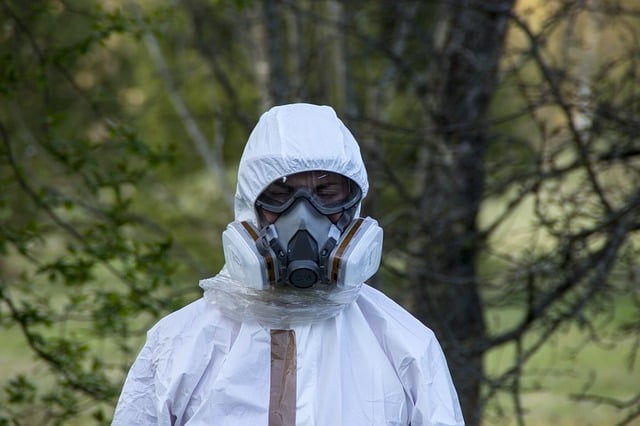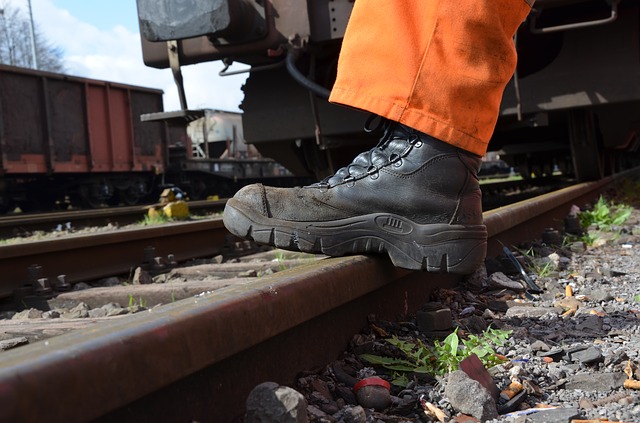
According to OSHA, a Maine-based roofing contractor has ignored numerous safety standards and exposed workers to significant fall risks for a number of years. OSHA cited the contractor – which has operated under the names Lessard Roofing & Siding and Lessard Brothers Construction – for safety violations at 11 different worksites between 2000 and 2011. However, the contractor failed to address the citations or pay any of the issued fines.
In 2011- after Lessard initially failed to address the OSHA citations – the 1st Circuit Court of Appeals ordered the contractor to correct the worksite violations, implement appropriate safety measures and pay accumulated fines with interest. Now, the court has held Lessard’s owner in civil contempt for defying the original 2011 order.
As a part of the recent court ruling, Lessard must do the following:
- Provide financial documentation to demonstrate the contractor’s ability to pay the $389,685 in outstanding OSHA fines.
- Ensure that employees and contractors use required safety equipment and fall protection.
- Conduct worksite safety analyses and meetings.
- Employ a competent person to ensure work proceeds according to OSHA regulations.
- Give OSHA details about each of the contractor’s worksites so the agency can conduct safety inspections.
Falls from ladders and roofs still account for the majority of injuries at work. In fact, fall protection violations are one of OSHA’s most frequent citations every year, with 6,072 issued in 2017 alone. Identifying fall hazards and deciding how to protect workers is the first step in eliminating or reducing fall hazards. Contact us at 831-661-5697 for OSHA programs, presentations and training materials you can use to protect your employees and avoid costly fines.
Read more

OSHA recently developed a standard for confined spaces in the construction industry (29 CFR 1926 Subpart AA). These spaces can present conditions that are immediately dangerous to your workers’ lives or health if not properly identified, evaluated, tested and controlled. As a result, preparing to respond to an accident in a confined space is just as important as training workers to enter them.
One provision of the standard requires employers to develop and implement procedures for summoning rescue and emergency services in permit-required confined spaces. Any employer who relies on local emergency services for assistance is required to meet the applicable requirements of the OSHA standard.
However, not all rescue services or emergency responders are trained or equipped to conduct rescues in confined spaces. When you identify an off-site rescue service, it is critical that the rescuers can protect your employees. The emergency services should be familiar with the exact site location, the types of permit-required confined spaces and the necessary rescue equipment.
Employer Considerations
Pre-planning for a rescue will ensure that the emergency service is capable, available and prepared to save your workers.
Before the start of any rescue operation, you must evaluate prospective emergency responders, and select one that has the following traits:
- Adequate equipment for rescues, such as the following:
- Atmospheric monitors
- Fall protection
- Extraction equipment
- Self-contained breathing apparatus (SCBA) for the particular permit-required confined space
- The ability to respond and conduct a rescue in a timely manner based on the site conditions, and the capability to conduct a rescue if faced with potential hazards specific to the space. These hazards may include the following:
- Atmospheric hazards
- Electrocution
- Flooding or engulfment
- Poor lighting
- Falls
- Chemical hazards
- The ability to notify you in the event that the rescue team becomes unavailable.
To ensure the safety of your workers, you must take a proactive role in securing the services of emergency responders. This includes finding the most efficient way of contacting emergency responders, conducting a tour of the project site with them and communicating any changes made to the site before a rescue becomes necessary.
Communicating With Emergency Responders
Talking with emergency responders about the hazards they might encounter during a rescue will assist in preparing for the situation. The following are some questions responders should be able to answer when you request their services:
- Are you able to respond and conduct a rescue in a timely manner based on the site conditions?
- Do you have the appropriate equipment for response and rescue?
- Are you prepared for the hazards identified at the project site?
- Are you aware of the exact location of the work site? This includes information on access routes, gates, site plans and GPS coordinates.
- Can you visit the site and hold a practice rescue?
- What is the best way to contact you? How would I communicate any changes to site conditions throughout the project?
- Could other emergencies or group training preclude you from responding, and how will that be communicated?
Additional Resources
Complying with OSHA’s new standard will protect your workers and save you from costly penalties. Contact us today at 831-661-5697; we can provide you with our comprehensive resource, “Permit-required Confined Spaces in Construction Program and Training Materials.”
Read more

According to a report by the U.S. House of Representatives’ Committee on Education and Labor, a staggering 69 percent of all workplace injuries and illnesses may not be represented in the Bureau of Labor and Statistics Survey of Occupational Injuries and Illnesses, which many trust as a gauge of the safety of American workplaces. On a corporate level, not reporting or underreporting workplace injuries can have serious ramifications for the organization and the employer, which can include fines, exorbitant and unnecessary, health costs and more.
Research has found that the employer’s behavior, policies and attitude are key determinants in a worker’s decision to report an injury. Not only is it essential that employees are educated on the importance of reporting injuries, it is also important to examine your company policies so you are not inadvertently discouraging reporting. The consequences of underreporting can be severe.
Consequences of Underreporting
The unfortunate trend of injury underreporting can have serious ramifications at both the industry and company level. Widespread underreporting can be quite damaging to workers’ compensation rates on a large scale. Employers may not realize it, but such an underreporting problem may lead to more audits by insurance companies of their clients and higher rates for everyone. Many employers erroneously believe that reporting injuries leads to audits and higher rates.
At the company level, underreporting injuries can be quite costly for the employer. If it is an OSHA-reportable incident, the employer may face significant fines if it is not properly recorded or reported.
In addition, often when an injury isn’t reported or properly cared for immediately, it worsens and leads to higher health care costs and more lost time. Even if it is never reported as a workplace injury, the employer still loses out on health care costs and productivity. If it is eventually reported, it becomes much more difficult to prove that it was workplace-related. Additionally, a study reported by the Hartford Financial Services Group found that injuries reported four or five weeks after the incident are 45 percent more expensive than injuries reported within the first week due to increased health costs and possible legal fees, or even a lawsuit, associated with late reporting.
One of the best ways to control workers’ compensation costs is through early reporting and intervention. Not only will it save money in health bills and legal fees, but it will also help to constantly improve your safety program. When there is an injury, consider it an opportunity to examine current safety procedures and decide if there is a suitable change that could be made to prevent similar injuries in the future. Thus, prompt reporting can be a productive element to your safety program in your quest to always strive for the safest work environment. Rather than accepting a vicious circle where injuries are not reported and thus nothing is done to fix the problem, leading to more injuries, take advantage of injury reporting as a proactive solution to safety.
Reasons for Underreporting
There are several reasons why employees may not report injuries immediately or at all.
Incentive programs: Many employers have reward or incentive programs to promote their safety initiatives, such as rewards for going a certain number of days without an injury. This can create a negative attitude toward reporting an injury, since doing so could cost that employee, a co-worker or a superior a reward or bonus.
Having incentive programs are a good idea, but a more effective strategy is to reward positive, safe behaviors. This can include reporting a safety hazard, attending a safety meeting or training class or equipment maintenance. Rather than rewarding for days without an injury, reward behaviors that strive to avoid injury, or even reward employees for prompt reporting when an injury occurs.
Fear of negative ramifications: Some employees fear that reporting an injury will create an image of them as weak to their co-workers and managers. He or she also may fear that such an image will be a detriment to his or her career.
Dispel this fear by assuring all employees that reporting an injury will have no negative impact on their job, and ensure follow through on all levels of the company. Work to promote a safety culture where prompt injury reporting is encouraged and praised. Injury reporting should never be frowned upon, even subtly or behind closed doors. If employees find out you are angry about a reported injury, he or she is less likely to report an injury in the future.
Some companies have a policy mandating drug testing after any incident whether or not there is evidence of drug use. This deters some employees from reporting injuries as well. Consider making the drug testing conditional depending on the circumstances of the injury and whether there is evidence that drug use was a factor.
For more information about injury reporting or your company’s workers’ compensation and safety programs, please contact Scurich Insurance at 831-661-5697 today.
Read more

Following the Hazardous Waste Operations and Emergency Response (HAZWOPER) requirements and regulations not only protects the health and safety of your employees, but it also saves you from expensive litigation you could face if you accidentally expose the outside environment and nearby residents to the potentially hazardous toxins on the worksite.
Officials from the Occupational Safety and Health Administration (OSHA), the U.S. Environmental Protection Agency (EPA) and the National Institute for Occupational Safety and Health (NIOSH) all have input on HAZWOPER’s regulations because of the widespread effect hazardous waste has on the population as a whole, not just the industries’ workforces. This document will help you understand the basic requirements of HAZWOPER and determine whether you are in compliance. For a complete list of HAZWOPER requirements or to read the standard in its entirety, visit www.OSHA.gov and search HAZWOPER (Standard 29 CFR 1910.120).
Who Needs to Comply?
HAZWOPER applies to the following types of operations, unless the employer can demonstrate that the operation does not involve the reasonable possibility of employee exposure to safety or health hazards:
- Cleanup operations required by a government body (federal, state or local) involving hazardous substances conducted at uncontrolled hazardous waste sites
- Corrective actions involving cleanup operations at sites covered by the Resource Conservation and Recovery Act (RCRA)
- Voluntary cleanup operations at sites recognized by government bodies (federal, state or local) as uncontrolled hazardous waste sites
- Operations involving hazardous waste conducted at treatment, storage or disposal facilities
What qualifies as an emergency under HAZWOPER can vary, and you should consider the nature of your operation and the extent of your employees’ training. For example, small acid spills by a firm that routinely handles acids would not be an emergency; however, the same situation might be considered an immediate hazard on a site where employees have less training, equipment or experience. In the event that employees are in the following situations, the HAZWOPER standard would apply:
- Presence of high concentrations of toxic substances
- Any situation involving hazardous substances that is life- or injury-threatening
- Environments that present imminent danger to life and health (IDLH situations)
- Accidents that present an oxygen-deficient atmosphere
- Conditions that pose a fire or explosion hazard
- Any situation that requires the evacuation of an area or that requires immediate attention because of the danger posed to employees in that area
HAZWOPER Training
This standard provides specific safety regulations, emergency procedures and training guidelines for employers to follow at worksites that handle hazardous waste or who have the potential for accidental release of dangerous chemical substances. HAZWOPER’s main goal is to get employers to think about how they would handle a spill before it occurs.
HAZWOPER sets five basic training levels related to chemical emergency response, and training requirements for these five groups vary depending on how closely they work with the hazardous material spill. All training must be completed upon hiring for any employee that is expected to participate in emergency response.
- First Responder Awareness Level — individuals likely to witness a hazardous substance release and whose only responsibility would be notifying the proper authorities. Must have sufficient training to demonstrate the following:
- Understanding of what hazardous substances are and the risks associated with them in an incident
- Understanding of the potential outcomes associated with a hazardous substance emergency
- The ability to recognize the presence of hazardous substances
- The ability to identify the hazardous substances, if possible
- The ability to realize the need for additional resources and make appropriate notifications
- First Responder Operations Level — individuals who respond to releases of hazardous substances for the purpose of protecting nearby people, property or environment from damage. They should respond defensively by containing the release and keeping it from spreading. Must have eight hours of training or sufficient experience to demonstrate the following:
- Knowledge of hazard and risk assessment
- Knowledge of proper personal protective equipment (PPE) use
- Knowledge of basic control, containment and/or confinement operations
- Understanding of standard operating procedures
- Hazardous Materials Technician — individuals who respond to releases with the purpose of actively and aggressively stopping it. They will attempt to plug, patch or otherwise stop the hazardous substance release. Must have at least 24 hours training, all the first responder operations knowledge and the following:
- Knowledge of how to implement the employer’s emergency response plan
- Ability to classify, identify and verify known and unknown materials by using survey equipment
- Knowledge of how to select and use specialized chemical PPE
- Have the ability to perform advanced control, containment and/or confinement operations with the resources and PPE available
- Knowledge of basic chemical and toxicological terminology and behavior
- Hazardous Materials Specialist — individuals who respond with and provide support to hazardous material technicians, but with more specific knowledge of various hazardous substances. Also acts as the site liaison with government authorities. Must have 24 hours of training, all technician-level knowledge and employer-certified knowledge on the following:
- The local, state and federal emergency response plan
- Classification, identification and verification of known and unknown materials using advanced survey equipment
- The implementation of decontamination procedures
- Advanced chemical, radiological and toxicological terminology and behavior
- On-Scene Incident Commander — individuals who assume control of the incident site. Must have 24 hours of training and employer-certified competency in the following areas:
- Ability to implement the employer’s incident command system
- Ability to implement the employer’s emergency response plan and the local/state/federal emergency response plan
- Understanding of the hazards and risks associated with employees working in chemical protective clothing
- Understanding of the importance of decontamination procedures
Some important notes on training regulations in the HAZWOPER standard are that measurements of a qualified trainer can be met by academic degrees, completed training courses and/or work experience. Also, HAZWOPER specifically addresses the use of video or online training to satisfy requirements, saying that computer-based systems are an incomplete solution and must be supplemented.
HAZWOPER Emergency Response Plan
Another important section of the HAZWOPER section you should take note of is the need for an emergency response plan with regard to hazardous substance releases. HAZWOPER gives the following guidelines for employers’ emergency response plans, saying it should at least include the following:
- Pre-emergency planning
- Personnel roles, lines of authority, training and communication standards
- Emergency recognition and prevention
- List of safe distances and places of refuge
- Site security and control standards
- Evacuation routes and procedures
- Decontamination procedures
- Emergency medical treatment and first aid procedures
- Emergency alerting and response procedures
- Critiques and follow-ups on previous emergency response situations
For more information on how you can further implement HAZWOPER loss control methods, contact Scurich Insurance.
Read more

Workers’ Compensation Insurance is an important product for employees. There are six common myths that surround this insurance, though. Debunk the myths so you can understand and maximize your benefits.
1. Small businesses don’t need to offer Workers’ Compensation Insurance.
You may work in a small business with only a few employees. Federal and state laws dictate that most businesses with one or more employees must carry Workers’ Compensation insurance. Be sure your employer carries this valuable insurance even if you are a solo employee.
2. I don’t need Worker’s Compensation insurance because my job is low-risk.
Some jobs, like construction, farming and commercial fishing, are dangerous. However, even low-risk jobs include injury and illness risks. You could develop carpal tunnel while typing or slip and fall in the break room during lunch. Your employer will pay lower Workers’ Compensation insurance premiums if you work in a low-risk job, and you absolutely must ensure you’re covered no matter what type of work you perform.
3. I’m careful and won’t get hurt.
While you might have an accident-free employment history, it only takes a second for an accident to happen. Plus, some workplace accidents or injuries occur because of someone else’s actions. Ensure you are covered by Workers’ Compensation regardless of your careful track record.
4. My boss is like family, and I could never sue.
It’s great that you have such a good relationship with your boss and feel like family. However, you are still employer-employee. By law, your employer must provide Workers’ Compensation for you. You also owe it to yourself and your dependents to have this valuable coverage in place in case you are injured or disabled and can’t work.
5. My boss will pay my work-related injury or illness expenses out-of-pocket.
Perhaps your boss has vowed to pay out-of-pocket for your medical, living and others expenses if you’re injured or become ill on the job. Unfortunately, your boss may decide not to pay, particularly when the Workers’ Compensation claims reach thousands of dollars or affect multiple employees. Always protect yourself with Workers’ Compensation insurance so that you can ensure your expenses are paid.
6. Any pain I feel at work is eligible for Workers’ Compensation.
While assembling furniture at work, you notice that your arm hurts. Instead of rushing to file a Workers’ Compensation claim, think about when and where the pain started. If it originated from an activity or injury that occurred outside of work, don’t file a Workers’ Compensation claim.
Workers’ Compensation insurance is important. Understand these six myths as you make sure you’re covered. For more details, contact your Human Resources manager or insurance agent.
Read more

Whether you stand all day, operate heavy machinery or handle chemicals, you need to protect your feet as you work. Several foot safety tips reduce injuries and help you maintain a safe work environment.
When to Wear Safety Footwear
Safety footwear protects your feet against numerous injuries, including punctures, impacts, electrical shock and compression. If you work in any hazardous work environment, you probably need to wear safety footwear as part of your daily uniform. Protective shoes also protect your feet if you suffer from weak ankles or other medical conditions.
Available Types of Safety Footwear
Depending on your job and preferences, you may select safety boots or sneakers. Available in a variety of styles and colors, the best safety shoes include a CSA certification and may include:
Safety-toe – features a special toe covering that protects the foot from dropped objects
Steel insole – stabilizes feet and protects them from joint and bone injuries or problems
Metal instep – provides a barrier against glass, nail and other sharp object punctures
Metatarsal protection – reduces injuries to your upper feet and internal bones
Electric protection – absorbs shock through specially made soles
Heat resistant – resists heat-related injuries
Water resistant – repels water and keeps feet dry
Nonslip – improves traction on various surfaces
Where to Purchase Safety Footwear
Your employer may provide strict guidelines and limitations about exactly which safety shoe you may wear, including where you may purchase this gear. If you can select the safety shoes you wear, check specialty footwear stores or online retailers. Because you want to protect your feet, select only the right shoes for your job and feet. Price should be secondary as you promote safety.
How to Fit Your Safety Footwear
When trying on safety footwear, ensure a proper fit.
- Try on shoes in the afternoon to accommodate swelling that occurs naturally during the day.
- Wear your regular work socks and any special supports.
- Ensure ample toe room since the shoes typically do not stretch with wear.
- Check for snugness around the heel and ankle.
- Walk around a bit to check for comfort.
Care Instructions
Most safety footwear requires ongoing care and maintenance. Before you wear them for the first time, apply a water-resistant coating. Every day, inspect your shoes for damage, including sole cracks, leather breaks or toe cap exposure. Always replace your safety footwear if you notice signs of wear or damage that you cannot repair and after a puncture, impact or other event that may compromise the shoe.
Protect your feet at work when you wear the right safety footwear. Talk to your employer and check OSHA resources as you purchase, maintain and wear shoes that protect your feet every day.
Read more






